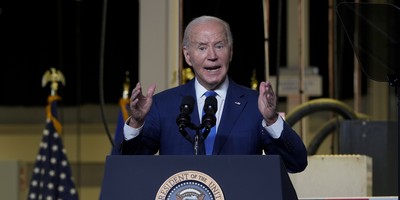More than 30 million Americans are living in "poverty," according to the U.S. Census Bureau. That’s one out of every seven people. But what does it really mean to be "poor" in America?
A Heritage Foundation report by Robert Rector and Rachel Sheffield finds there is more here than initially meets the eye.
To most Americans, the word "poverty" implies significant material deprivation, including inadequate food, clothing and shelter. The actual living conditions of America's poor are very different, however. According to the government's own survey data, in 2005:
• The average household defined as poor lived in a house or apartment equipped with air conditioning and cable TV.• The family had a car (a third of the poor have two or more cars).
• For entertainment, the household had two color televisions, a DVD player and a VCR.
• If there were children in the home (especially boys), the family had a game system, such as an Xbox or PlayStation.
• In the kitchen, the household had a microwave, refrigerator, and an oven and stove.
• Other household conveniences included a clothes washer, clothes dryer, ceiling fans, a cordless phone and a coffeemaker.
The home of the average poor family was in good repair and not overcrowded. In fact, the typical poor American had more living space than the average (non-poor) European, the Heritage scholars note. The poor family was able to obtain medical care when needed. When asked, most poor families stated they had had sufficient funds during the past year to meet all essential needs.
Recommended
Does that mean it’s game, set, match. Case closed? Well not quite. Liberal blogger Matt Yglesias says the Heritage report leaves out three things: housing, education and health care.
Over the past 50 years, televisions have gotten a lot cheaper… Consequently, even a low-income person can reliably obtain a level of television-based entertainment that would blow the mind of a millionaire from 1961. At the same time, if you’re looking to live in a safe neighborhood with good public schools in a metropolitan area with decent job opportunities you’re going to find that this is quite expensive. Health care has become incredibly expensive.
But what do these three sectors have in common that’s missing from the market for television sets and video games? Government. I’ll save health care for another occasion, and consider the other two.
Does anyone doubt that government totally dominates education, shaping and molding every facet of it? We are all forced to pay for the public system, even if we don’t use its services. And even though the public schools may work tolerably in well-to-do suburbs, they are generally miserable in neighborhoods where most poor people reside.
That brings us to housing. For one thing, the real estate market is highly regulated. So much so that many poor people have been priced out of the private marketplace and must rely on public housing instead. More importantly, the way the government runs the school system, the housing market is really a surrogate market for public education.
A study of north Dallas schools found that housing prices varied in lock step with independent measures of school quality. Another study compared housing prices in Highland Park, a ritzy Dallas enclave with its own school system, except for one tiny area that spills over into the Dallas Independent School District. Along a Highland Park street that divides the two school systems, there is no visible difference in the appearance of the houses. But the average difference in price was $72,000. That’s what it costs to go to a Highland Park school rather than an inner city school.
Remember this price differential is not created by the real estate market. It reflects the relative value of two government school systems. “Tragically,” Yglesias writes, “many Americans can’t afford a house in a safe neighborhood with a decent school that’s within a convenient commute of the central business district of a major city.”
True enough, but whose fault is that? Don’t blame it on capitalism.

























Join the conversation as a VIP Member